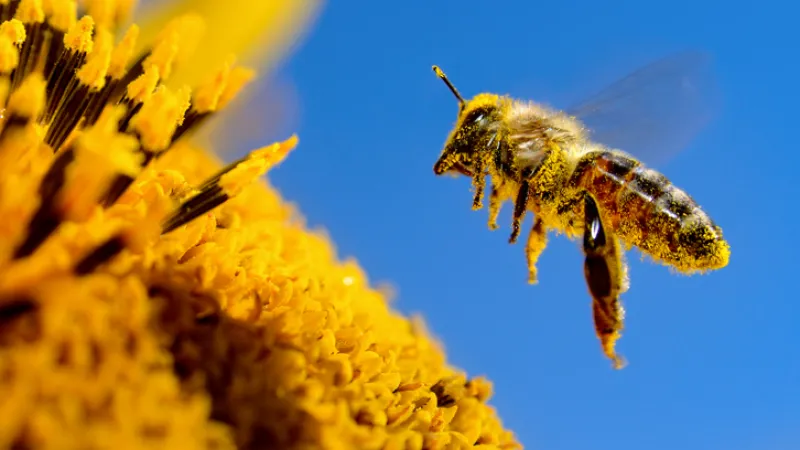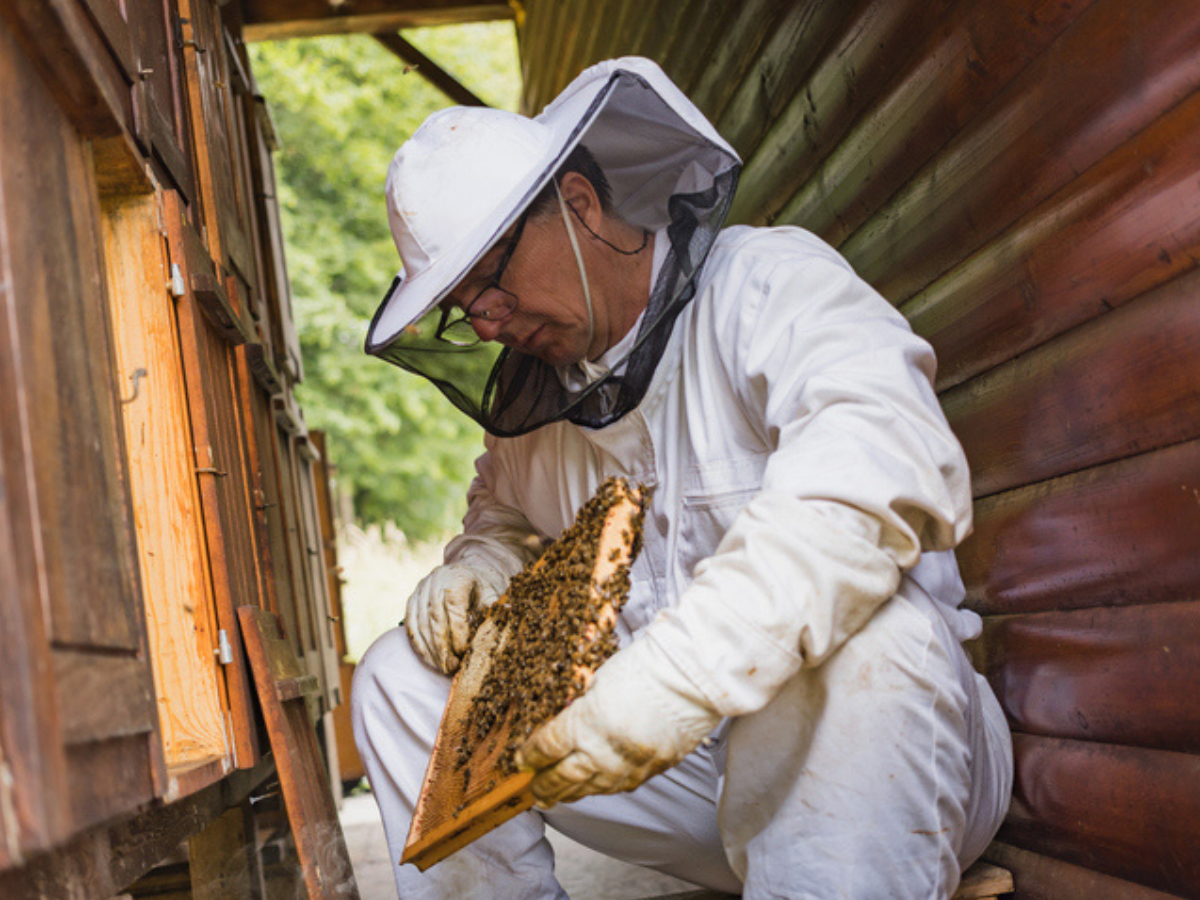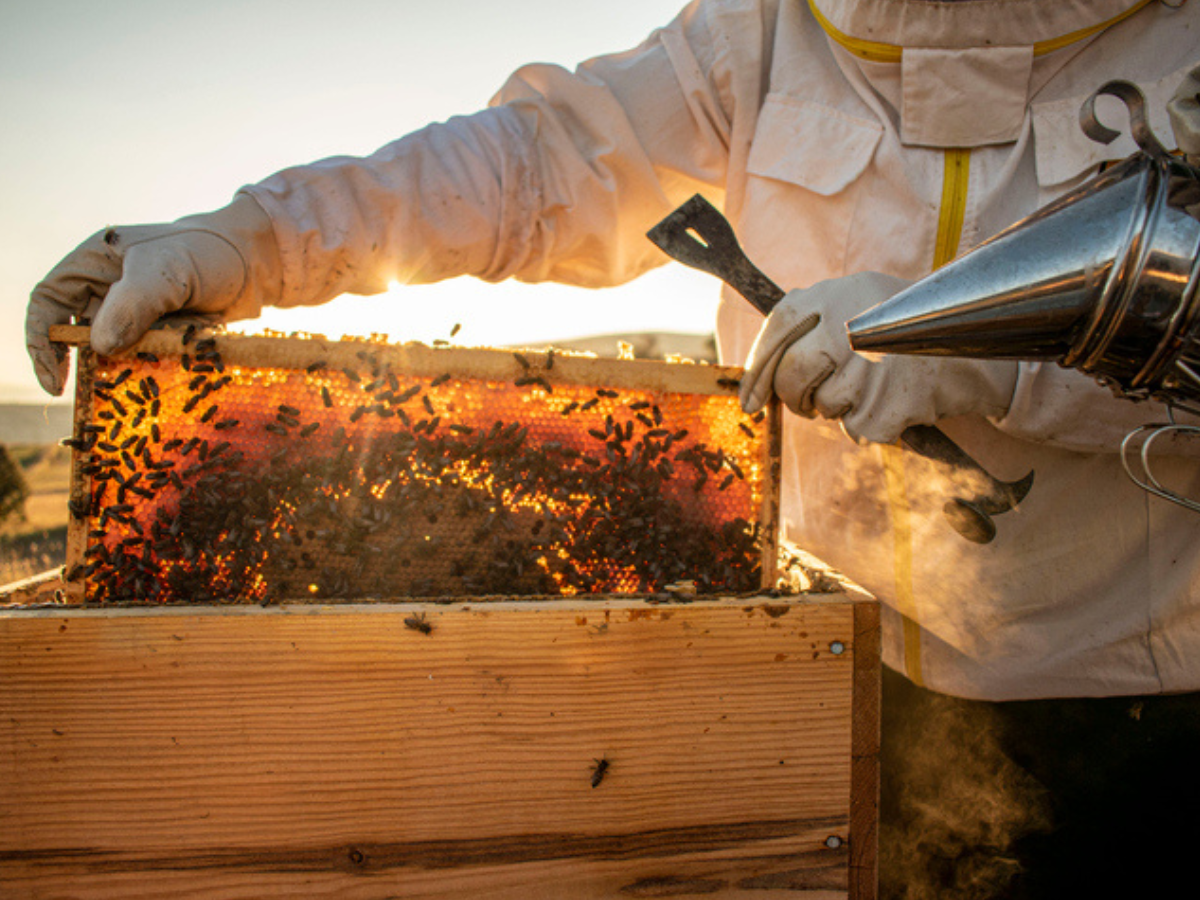
A Beginner’s Guide to Beekeeping in the Prairies: Tools, Tips, and Insurance
Summary
Reading Time
7 min
Beekeeping for some is a hobby and for others, it’s a vital part of agriculture, a rewarding way to connect with nature, and an opportunity to contribute to environmental sustainability. In the Canadian Prairies, where long winters and fluctuating temperatures can challenge even experienced beekeepers, starting and maintaining a successful apiary requires knowledge, preparation, and the right equipment.
For beginners, getting into beekeeping can feel overwhelming, but with the proper guidance and planning, it’s entirely possible to build a thriving colony. From understanding the tools of the trade to protecting your investment with insurance, this guide will walk you through everything you need to know about beekeeping in Alberta, Saskatchewan, and Manitoba.
Why Bees Matter in the Prairies
Bees are big-time players in the Prairie ecosystem. They help pollinate important crops like canola, alfalfa, and sunflowers, and without them, farming in this part of the country would look very different. Many local farmers team up with beekeepers to boost crop yields and keep things growing.
However, It’s not just about agriculture. Bees also help wildflowers and native plants thrive, which supports birds, other pollinators, and small animals too. While native bee species are already doing their thing out there, managed honeybee colonies give the ecosystem a helpful boost.
At Sandbox, we’re proud to support pollinator health. We recently donated to the Pollinator Partnership Canada to help protect critical habitats across the country.
Understanding the natural cycle of beekeeping in this region is key. While the warm summer months provide excellent foraging opportunities, the harsh winters mean beekeepers must plan to keep their colonies alive during long periods of cold and food scarcity.

Essential Tools and Equipment for Prairie Beekeeping
Before your bees arrive, you’ll need to gear up with some essentials. Most Canadian beekeepers use a Langstroth hive, which is made up of stackable wooden boxes with removable frames. These give your bees the perfect space to build honeycomb, store nectar, and raise their young. You’ll also need a hive cover, a bottom board, and an entrance reducer to help regulate temperature and keep pests like mice and wasps out.
Safety is a must, even with calm bees. A beekeeping suit, gloves, and a veil will help protect you from stings, while tools like a smoker and hive tool make inspections easier and keep your bees relaxed. Other helpful items include feeders for early spring or late fall, a soft bee brush for gently moving bees, and an uncapping knife for when it’s time to harvest honey. Starting off with good equipment makes the whole process smoother for you and healthier for your hive.
Choosing and Caring for Bees in Prairie Conditions
Not all bees are built for the wild Prairie climate. You’ll want to choose a breed that can handle cooler temperatures and sudden weather shifts. Italian, Carniolan, and Russian bees are all great options. They’re known for being calm, productive, and resilient, which makes them ideal for both new and experienced beekeepers.
Most beginners start with either a nucleus colony or a package of bees, which includes a queen and a group of workers ready to get to work. Once settled in, they’ll spend the next few weeks building comb and collecting nectar. Regular hive checks are important to catch signs of stress, disease, or overcrowding. Varroa mites are one of the biggest concerns in the Prairies, so keeping your hive well ventilated and feeding your colony when needed can help prevent problems. A little routine care goes a long way in keeping your bees healthy.

Preparing for Harsh Prairie Winters
Winter in the Prairies isn’t exactly a walk in the park, and your bees feel the same way. Since they can’t head out to forage when everything’s frozen, they need to stockpile enough honey to get them through months of cold and zero flowers. On average, a colony needs about 80 to 100 pounds of honey to survive. If their stash is looking a little low, you can step in with sugar syrup in the fall or fondant in the winter to give them a boost.
Keeping your bees warm and dry is just as important as keeping them fed. Most beekeepers wrap their hives with breathable insulation and add ventilation at the top to stop moisture from building up inside. Too much dampness can be deadly. Hive placement matters too - tuck them into a sunny, sheltered spot that’s out of the wind, and you’re already ahead. Some folks even go the extra mile and move their hives into wintering sheds to keep conditions just right. With a little prep, your bees can stay cozy and make it through to spring like champs.
Harvesting and Selling Honey in the Prairies
For a lot of beekeepers, honey harvest season is the best part of the whole experience. After months of hive checks and hard work from your buzzing crew, it's finally time to taste the sweet rewards. In the Prairies, most harvesting happens in late summer or early fall, depending on weather and how much nectar is flowing. Once your frames are full and capped, you’ll gently remove them, uncap the honeycomb, and spin them in an extractor. After a quick strain, your liquid gold is ready to bottle and enjoy or share.
Selling your honey? You’ve got options. Farmers markets, local shops, and word of mouth are great ways to find customers who love raw, local products. Some beekeepers even branch out into beeswax candles, propolis tinctures, or pollen for health products. Just make sure to check your province’s rules before selling anything. Each one has its own food safety and labeling guidelines. In Saskatchewan, for example, you might need to register if you’re producing above a certain amount. A little prep goes a long way and so does good honey. And if your honey business starts to grow, check out our blog on starting your own small business in the Prairies for helpful tips on planning, licensing, and protecting what you build.

The Importance of Insurance for Beekeepers
While beekeeping can be incredibly rewarding, it also comes with risks. Colonies can be lost due to disease, extreme weather, or vandalism, and liability concerns arise when selling honey or allowing visitors to an apiary. Beekeepers, whether hobbyists or commercial producers, should consider insurance coverage to protect their investment.
Property insurance can cover losses related to hive damage, theft, or natural disasters such as storms and wildfires. Liability insurance is especially important for those selling honey or hosting educational events, as it provides protection against claims related to allergic reactions, food safety issues, or injuries sustained on the property.
In Alberta, Saskatchewan, and Manitoba, beekeepers may also be eligible for government programs that provide financial assistance in the event of catastrophic colony losses. Researching available insurance options and risk management strategies can help ensure long-term success in beekeeping.
Embracing Beekeeping in the Prairies
Beekeeping in the Prairies can be a little unpredictable, a little messy, and a whole lot of fun. Whether you’re doing it for the honey, to help the environment, or just to try something new, it’s a great way to connect with nature and make a positive impact in your community.
From choosing your bees to getting your hives winter-ready and sorting out your insurance, every step brings you closer to something rewarding. One hive at a time, Prairie beekeepers are helping pollinators thrive, supporting local agriculture, and keeping ecosystems healthy. Not sure where to start? Find a broker who can walk you through your options and help you feel confident every step of the way. And who knows, your backyard hive might just inspire someone else to jump in too.
Please note that the information in this article may not accurately reflect your insurance policy from Sandbox Mutual Insurance or another insurance company. Please refer to your policy or talk to your broker about your specific coverages.

FAQ'S
What equipment do I need to start beekeeping in the Prairies?
Starting in beekeeping is like setting up a tiny, very organized neighbourhood, and the bees appreciate good infrastructure. Most beginners start with a Langstroth hive, along with the usual protective gear like a veil, gloves, and a suit that makes you look far more intimidating to bees than you actually are. A smoker, hive tool, feeders, and a simple bee brush round out the essentials. Getting quality equipment from the start not only keeps your bees happy but also helps you feel confident during inspections, because nothing says “new beekeeper panic” like realizing you forgot your gloves mid-check.
How do Prairie winters affect beekeeping, and how can I prepare my hive?
Prairie winters are the real deal- long, cold, and not particularly bee-friendly, so prepping your hive is key to getting your colony through to spring. Bees need plenty of stored honey, and many keepers offer sugar syrup or fondant when winter stretches longer than expected (which it always does). Insulation, proper ventilation, and choosing a sunny, sheltered spot help prevent moisture buildup, which is often more dangerous than the cold itself. With some thoughtful winterization, your bees have a fighting chance to emerge in spring ready for another season of hard work, unlike the rest of us, who usually need at least two weeks to thaw.
Do beekeepers need insurance?
They do, even if your beekeeping journey starts as a hobby that’s more “weekend project” than “full-time buzz-ness.” Insurance helps protect the time, money, and effort you put into your hives, whether it’s damage from storms, unexpected theft, or a curious critter getting a little too close. Liability coverage is just as important if you’re selling honey, hosting workshops, or welcoming visitors to your apiary. And here in the Prairies, some government programs even offer support for catastrophic colony losses, giving you a little extra peace of mind. When your entire workforce literally buzzes with activity, it just makes sense to keep them, and yourself, protected.



